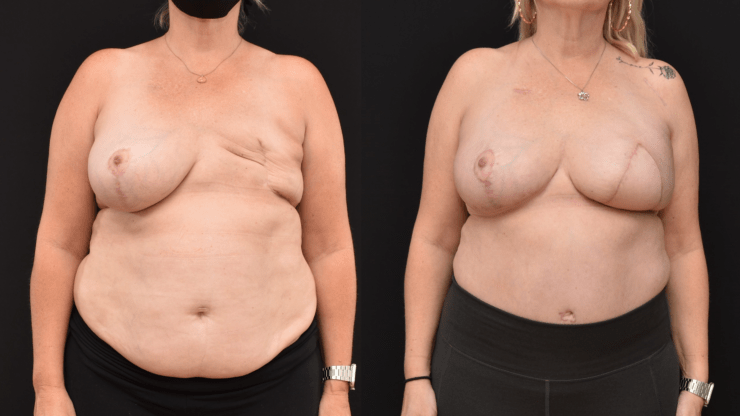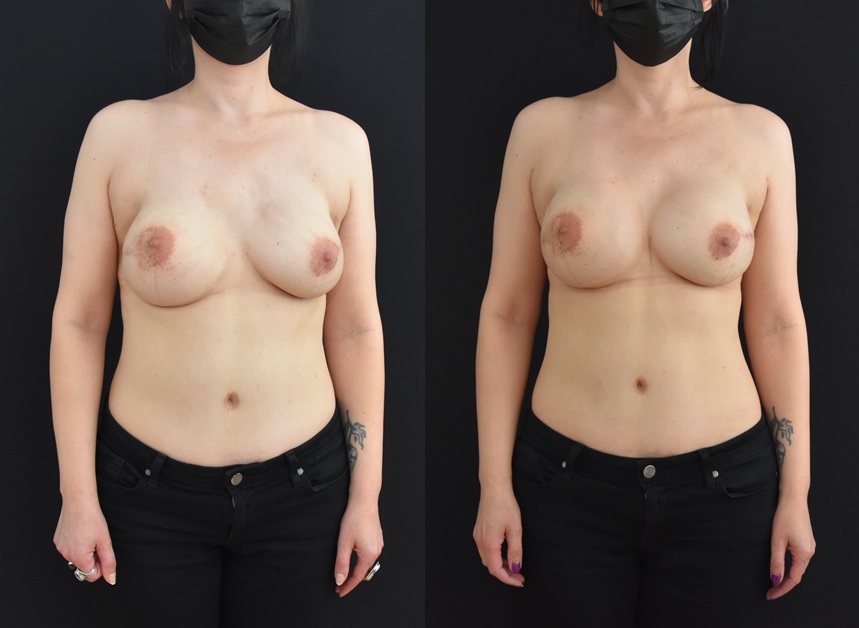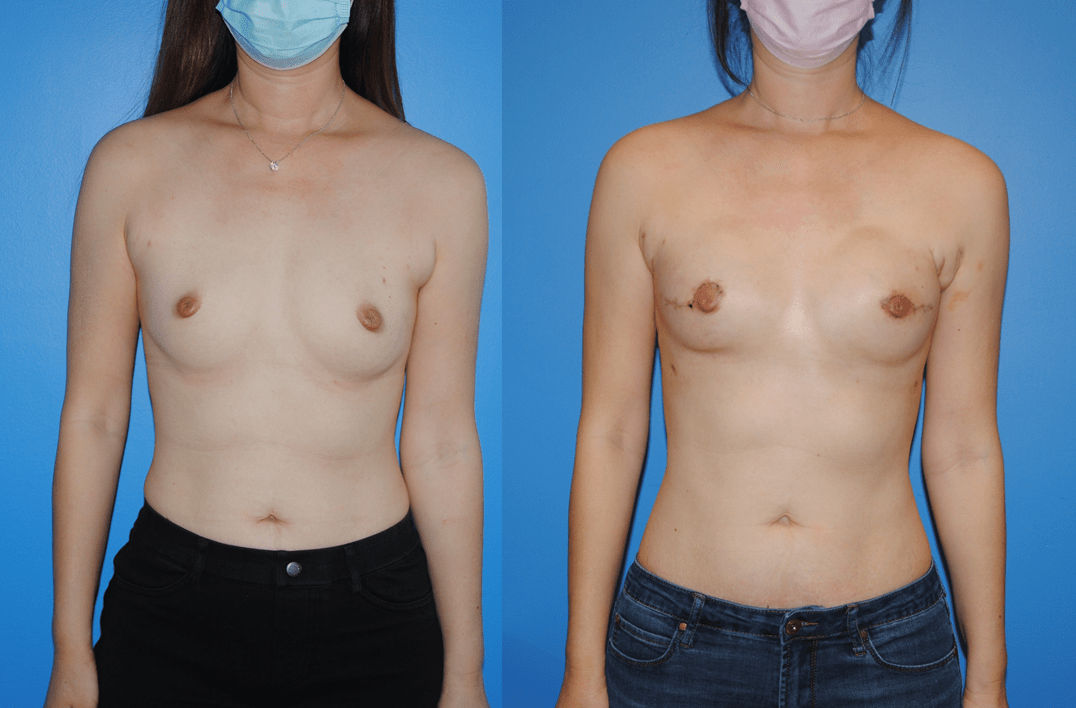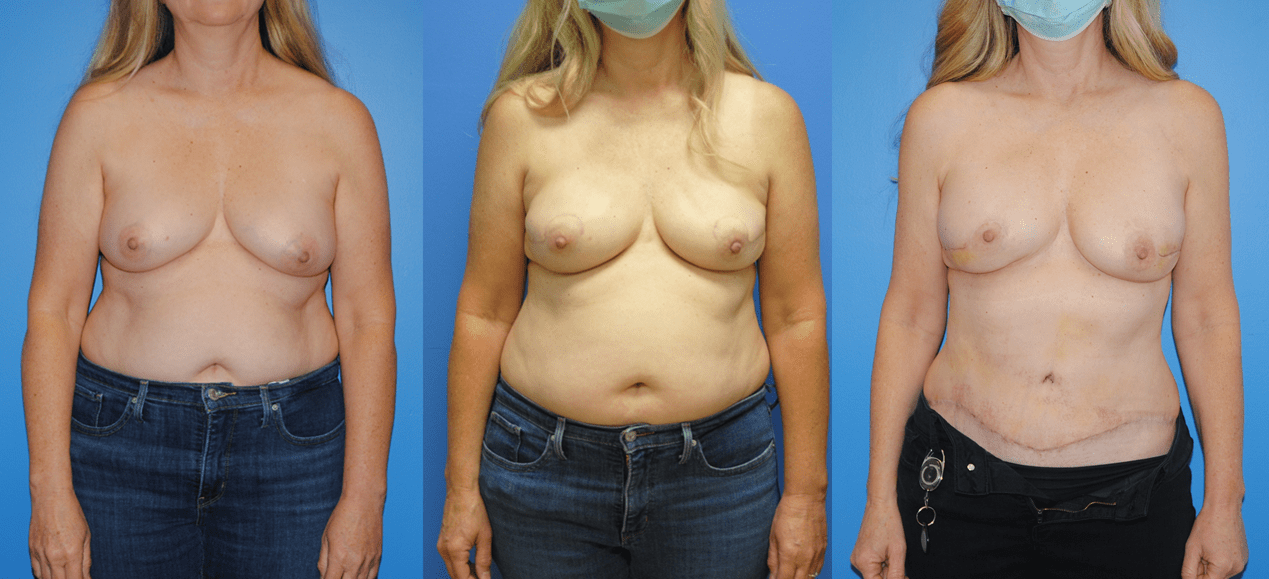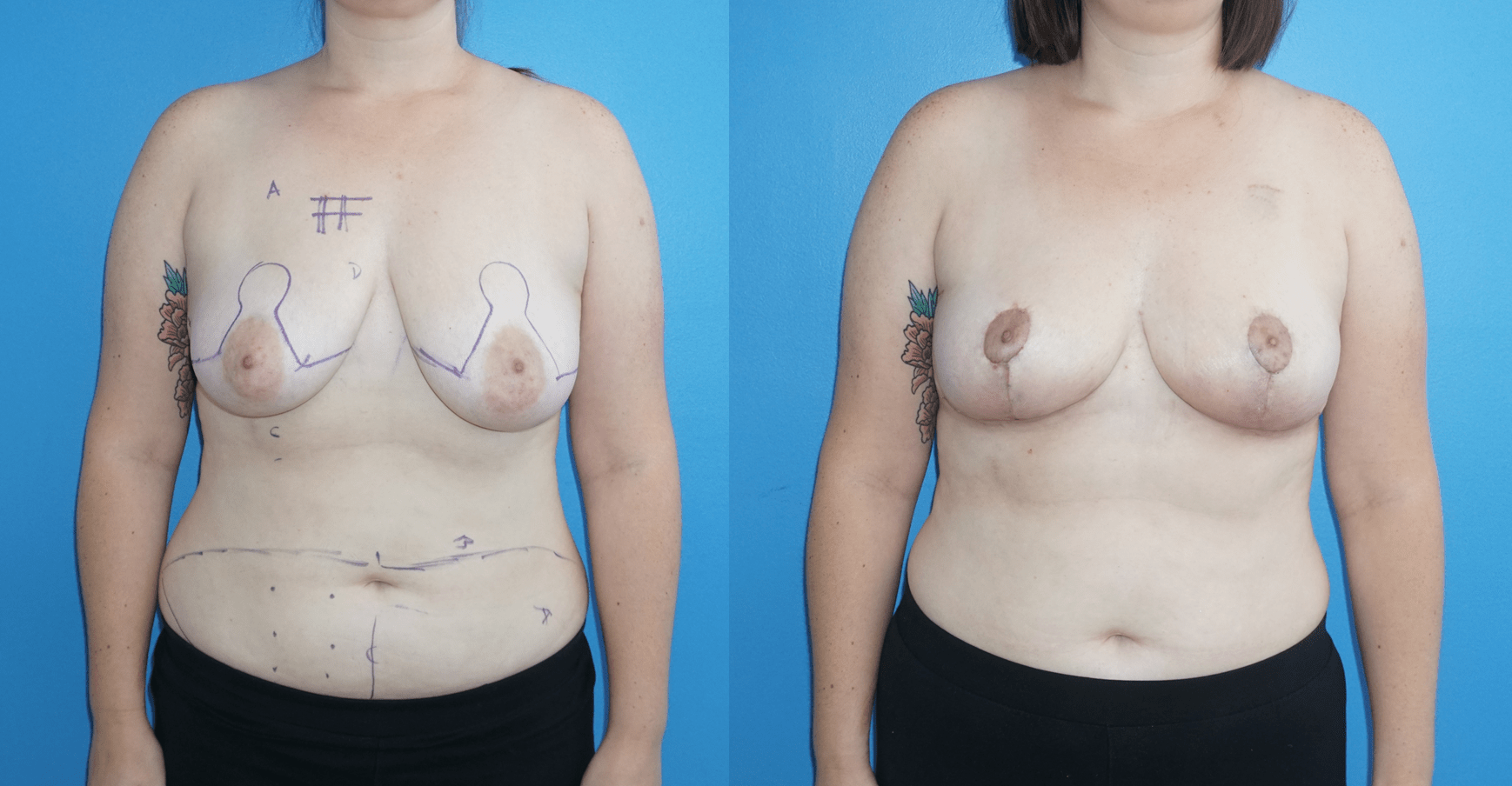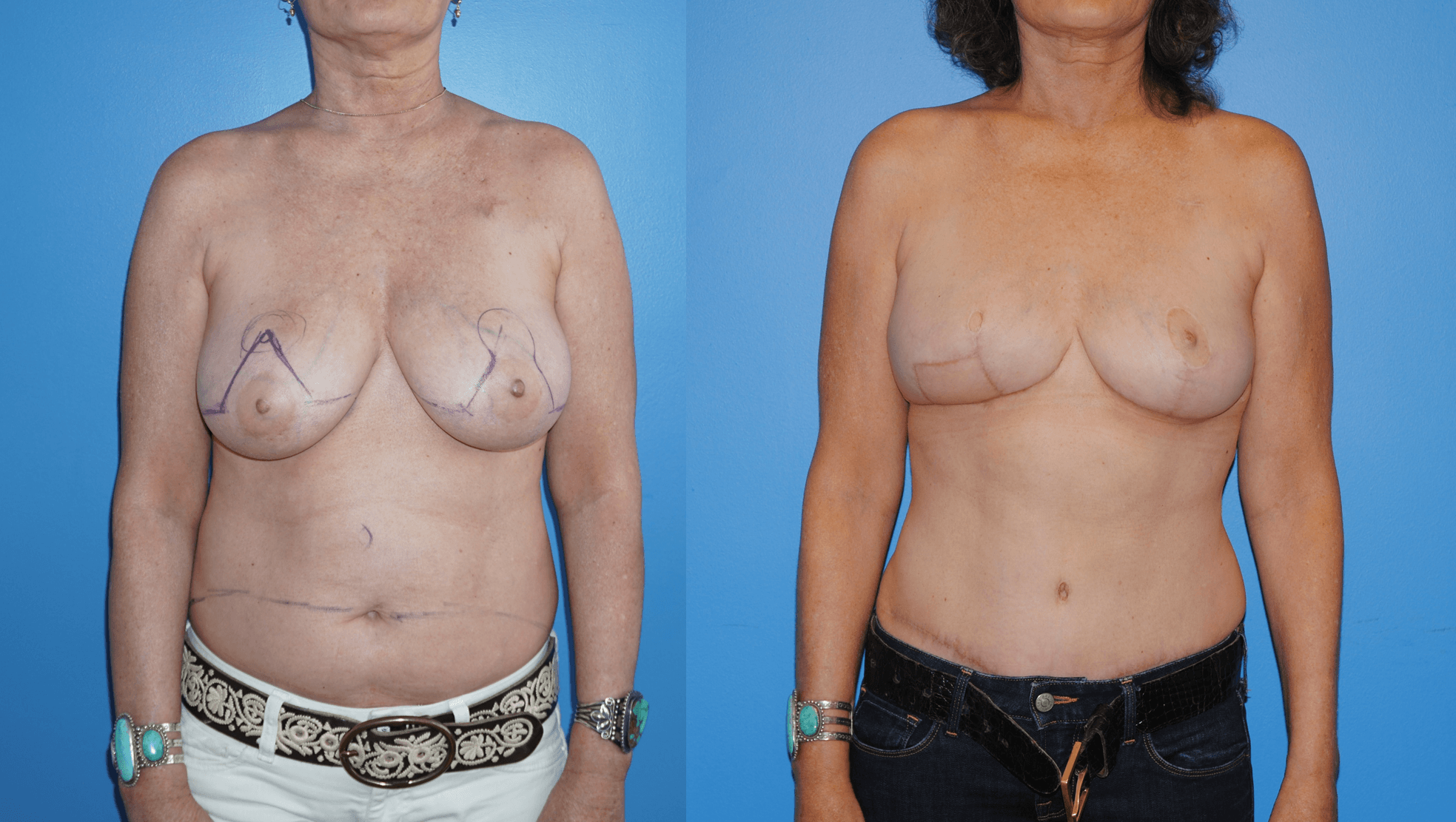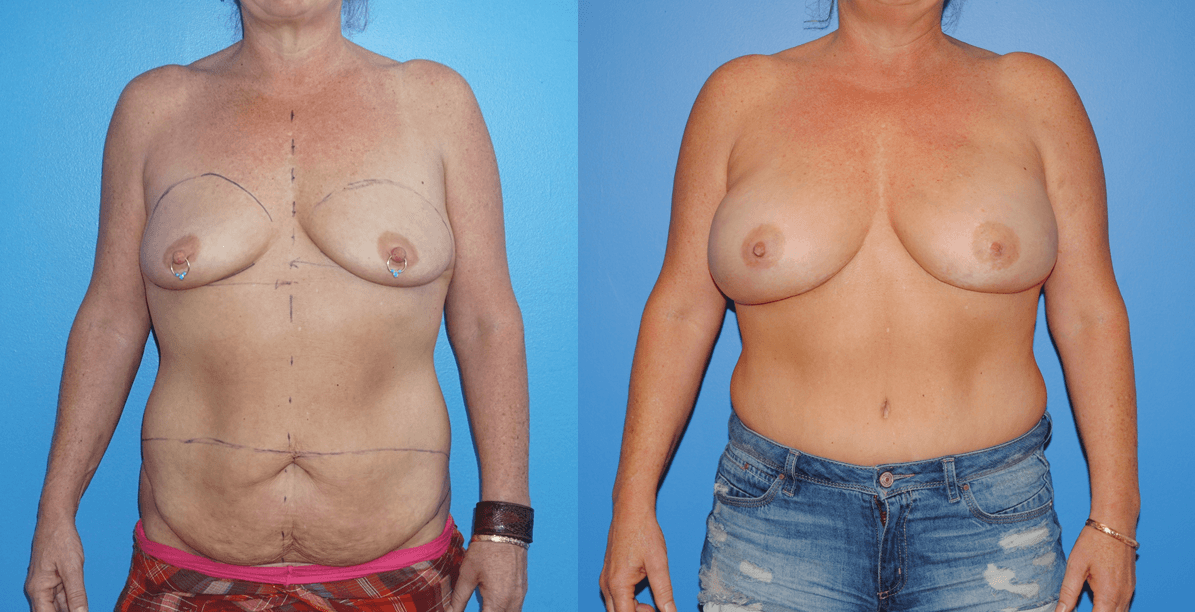After mastectomy, the breast can be reconstructed with implants or with the patient’s own tissue. When we reconstruct the breast with the patient’s own tissue, we use the term autologous breast reconstruction. Reconstruction with the patient’s own tissue is helpful in cases where radiation was required after mastectomy or in situations where implants became infected at any time after a…
Left Breast Reconstruction with DIEP Flap to Reconstruct the Breasts when Implants are not an Option
